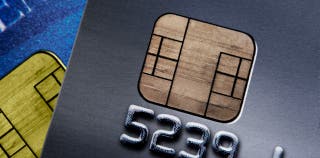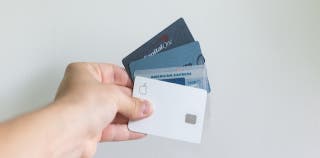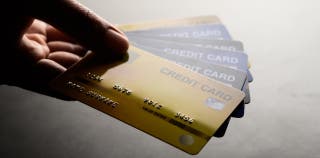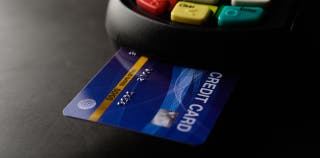Can I transfer money from a credit card to my bank?
It’s definitely possible to transfer money from a credit card to a bank, but that doesn’t mean doing so is a financially savvy move. For starters, there are always fees involved in using a credit card to access cash, and these fees are incredibly difficult to avoid.
You also have to consider the potential impact on your credit score, and you should know how you’ll pay the money back. After all, the high interest rates credit cards charge make them a poor source if you need to borrow money. In almost every possible scenario, you’ll be better off borrowing cash with another financial product such as a personal loan or a home equity loan.
Is it okay to transfer money from a credit card to a bank account?
If you have no other option and you need money immediately, transferring cash from your card account to your bank can help you get funding. However, there are some steps you’ll need to take ahead of time before you make this move.
For example, you should know that transferring cash from your card account will immediately add to your credit card balance. This means you’ll have an equal amount in credit card debt compared to the money you access.
Before you use your credit card to get cash out, you should also make sure you have the available credit to do so. If you don’t have enough available credit and you try to get cash from an ATM with your card account, the transaction will be denied.
As we already mentioned, you should also note that fees will apply when you use a credit card to fund a bank account. These fees will vary depending on the method you choose, however, and we go over them in more detail below.
Reasons to send money from a credit card
Despite the fees and debt involved, there are some scenarios where it makes sense to send money with a credit card.
A few example scenarios are as follows:
- You have a temporary financial emergency and will have the means to pay off your credit card in the near future.
- Getting a cash advance on a credit card could help you avoid losing your home to foreclosure.
- Your only alternative to get cash is with a payday loan, which has its own set of consequences.
Reasons to avoid money transfers with a credit card
While there are some emergency situations where sending money with a card account can make sense, you should look for another way to fund yourself if you can.
Here are the most important reasons why:
- Using credit cards for a money transfer can be incredibly costly.
- You can rack up credit card debt that can take years or decades to pay off.
- There are more affordable ways to borrow money, including a personal loan, a home equity loan, or a home equity line of credit (HELOC).
- Racking up credit card debt can have adverse effects on your credit score.
Does transferring money from a credit card to a bank account hurt your credit score?
Charging debt on a credit card to access cash can negatively impact your credit score. This is due to the fact that your credit utilization ratio makes up 30% of your FICO score. Taking out cash from a credit card causes this utilization ratio to increase overnight, and having a ratio that’s too high can have disastrous results.
Most experts suggest keeping your credit utilization ratio below 30% of your available credit, which may be a bigger chore if you have a low credit limit. If your credit card’s limit is only $1.000, for example, you would need to keep your credit card balance at $300 or less to keep your utilization ratio in a good range.
Of course, you may have more wiggle room to get cash out on your credit card if you have a much higher credit limit. Either way, you should keep your utilization ratio in mind before you move forward with any of the methods we suggest below.
How to send money with a credit card
You can send money to your own bank account or another person’s account with any of the following methods:
ATM cash advance
You can use your credit card to get cash from an ATM in most cases, although you should know about the fees and other charges involved in doing so. You should also know you’re adding debt to your credit card. If you use your credit card to get $500 out of an ATM, for example, you’ll have $500 in credit card debt plus any amount in cash advance fees that apply. Generally speaking, upfront cash advance fees are for 5% of the amount you transfer, or $25 on a money transfer of $500.
You may also have to pay a cash advance APR on that debt, which means you’ll be stuck paying a higher interest rate than the variable APR your credit card charges on purchases. Finally, you’ll lose your grace period if you get a cash advance from an ATM, which means interest starts racking up on this new debt from day one.
Convenience checks
You can also use credit card convenience checks to transfer money from a card account to your checking account, and they make the process easy since you can simply write them out to yourself and deposit them in your bank account. You can also use credit card convenience checks to execute a balance transfer, or to transfer debt from one credit card to another.
Either way, you should know that these checks work the same as a cash advance from an ATM. In fact, they typically require the same cash advance fee and cash advance APR, and you may also lose your grace period.
Money transfer services
You may also be able to send cash with a credit card using a third-party company like Western Union or MoneyGram. These services let you fund your money transfer with plastic, but there are upfront fees involved.
With Western Union, for example, sending $1,000 to a bank account and funding it with a credit card would actually cost you $1,099.99. You can check Western Union fees for sending money with a credit card or debit card with their payment estimator tool.
Money apps
Several money apps let you send cash with a credit card to your own account or someone else’s. These apps all work similarly, but one may work better for your needs depending on your goals.
-
Venmo: You can send money to anyone with a credit card using your Venmo account, but a 3% fee will apply. If you’re sending money with a Visa or Mastercard, you may also be charged a cash advance fee depending on your card issuer.
-
PayPal: You can also use a PayPal account to send cash with a card account, but the recipient will be charged a fee of 2.9% plus $0.30 for accepting a credit card payment. Also note that PayPal does not let you send money to your own bank account with a card, per their terms and conditions.
-
Amazon Pay: Amazon Pay charges a 2.9% fee plus $0.30 per web or mobile transaction for money transfers.
-
Cash App: You can also transfer money from a card with Cash App, although a 3% fee will be added to the total transfer amount when you do.
Wire money from your credit card
You may be able to wire money from a credit card, but you should know that doing so will be costly. According to Discover, a wire transfer with a credit card is typically treated like a cash advance. This means you’ll be charged a cash advance fee and a higher interest rate on the balance, and you’ll also lose your grace period.
From there, additional wire transfer fees can vary depending on your bank. There may also be additional fees charged on international transfers.
Redeem cash-back rewards
If you have a rewards credit card and you have some points saved up, it may be possible for you to turn them into cash in your checking account. This all depends on the specific cash-back credit card you have and the options you have for redeeming your rewards.
As an example the Wells Fargo Active Cash® Card lets you redeem rewards for statement credits to your account, transfers to an eligible Wells Fargo bank account, cash at a Wells Fargo ATM in $20 increments, or gift cards.
Alternative ways to transfer money to your bank account
If you need cash in your actual checking account and you’ve decided using your credit card is too risky or expensive, consider the alternative ways you get the money you need through a bank-to-bank transaction.
-
Personal Loan: Personal loans let you borrow money with a fixed interest rate, a fixed monthly payment, and a fixed repayment plan that will not change. Most personal loans are unsecured, although there are secured personal loans to consider as well.
-
Home equity Loan: A home equity loan will let you borrow money with a fixed interest rate, a fixed monthly payment, and a fixed repayment plan that will not change. However, you need considerable equity in a property you own to qualify, and your home equity will be used as collateral for the loan.
-
Home Equity Line of Credit (HELOC): A HELOC lets you borrow against your home equity with a variable interest rate, and your monthly payment will depend on how much cash you access. Like with a home equity loan, the value of your property is used as collateral for the line of credit.
-
401(k) Loan: If you have money saved for retirement in a 401(k) account, you may be able to borrow against it. However, not all 401(k) plans allow you to take out a loan against your balance, and the fees required will vary depending on your plan administrator.























































































































